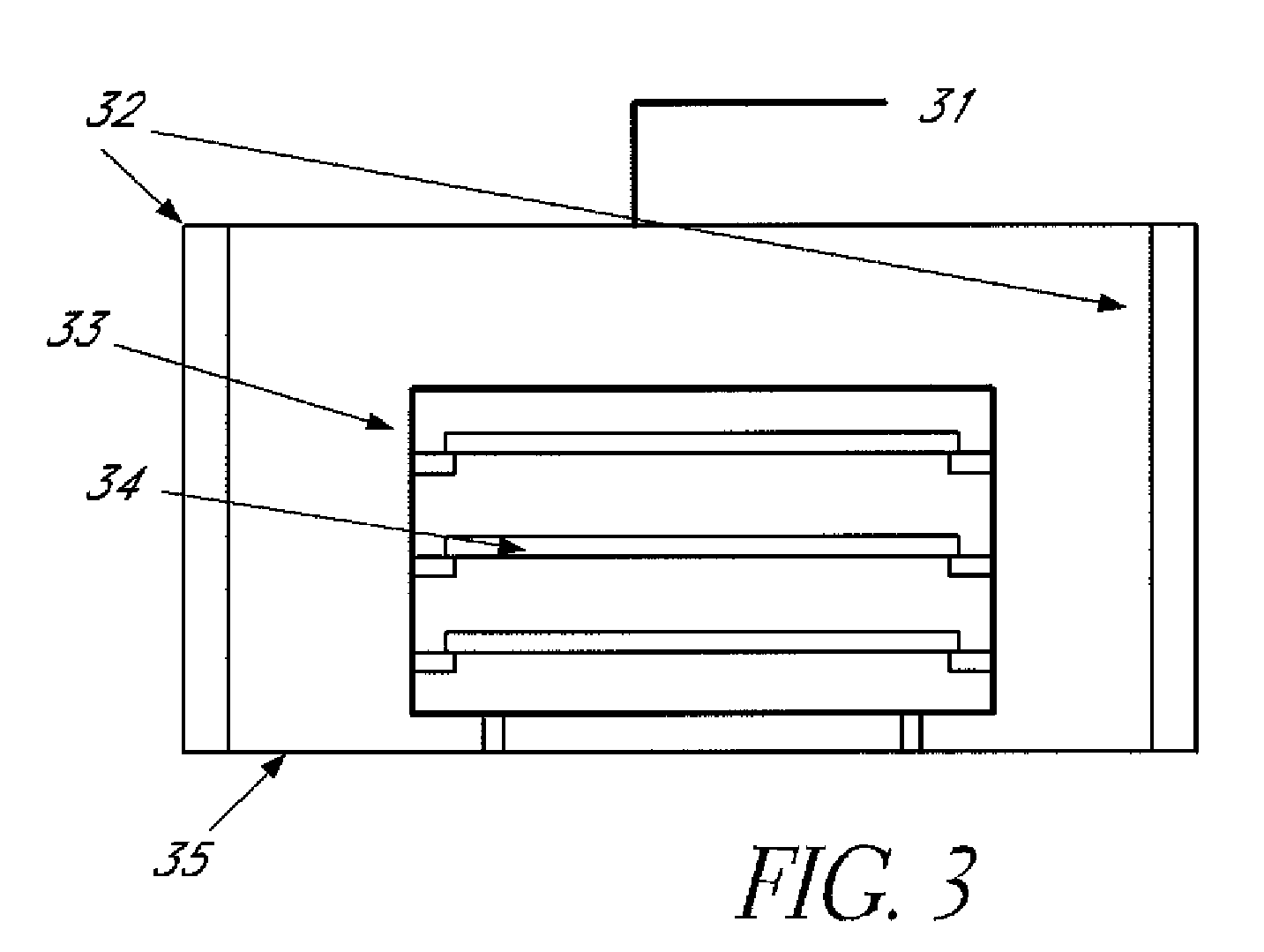Method for forming dielectric film using siloxane-silazane mixture
a technology of siloxane and siloxane, which is applied in the field of siloxane-containing dielectric films, can solve the problems of film's resistance to damascene processing technology to deteriorate significantly, reduce the film density too much, and achieve high density and high strength. , the effect of high density
- Summary
- Abstract
- Description
- Claims
- Application Information
AI Technical Summary
Benefits of technology
Problems solved by technology
Method used
Image
Examples
example
[0059]Specific examples are explained below. Low dielectric constant films were formed using the apparatus shown in FIG. 1 under the conditions specified in Table 1.
TABLE 1Film Forming ConditionsM-DischargeSusceptorTMOS1.1.3.3TMDSHe13.56 MHzPressuregapHeatXe-UVExample(° C.)(sccm)(sccm)(sccm)(W)(Pa)(mm)treatmenttreatment120252560025040024400° C.400° C. O2O2 / N22↓5025↓↓↓↓↓↓3↓2550↓↓↓↓↓↓4−55025400300↓28↓↓5↓100↓↓↓↓↓↓↓6↓200↓↓↓↓↓↓↓M-TMOS: Methyl trimethoxysilane1,1,3,3 TMDS: 1,1,3,3 tetramethyl disilazane
TABLE 2Evaluation Results of Film Quality CharacteristicsDielectricDielectricbreakdownLeak currentEMFilm densityN groups in filmEmbeddingExampleconstant(MV)2 MV(A / cm2)(GPa)(g / cm3)(%)characteristics12.65.51.0E−9151.4Not detectedFavorablecharacteristics22.55.33.1E−9141.36↓↓32.75.72.1E−9181.43↓↓42.45.25.8E−9131.34↓↓52.25.25.2E−9121.3↓↓62.05.14.3E−9101.25↓↓Film density: Measured result using XRR / Remaining N groups in film: Measured by RBS-HFS
[0060]The film forming time was set so as to achieve ...
PUM
| Property | Measurement | Unit |
|---|---|---|
| Temperature | aaaaa | aaaaa |
| Temperature | aaaaa | aaaaa |
| Wavelength | aaaaa | aaaaa |
Abstract
Description
Claims
Application Information
 Login to View More
Login to View More - R&D
- Intellectual Property
- Life Sciences
- Materials
- Tech Scout
- Unparalleled Data Quality
- Higher Quality Content
- 60% Fewer Hallucinations
Browse by: Latest US Patents, China's latest patents, Technical Efficacy Thesaurus, Application Domain, Technology Topic, Popular Technical Reports.
© 2025 PatSnap. All rights reserved.Legal|Privacy policy|Modern Slavery Act Transparency Statement|Sitemap|About US| Contact US: help@patsnap.com



